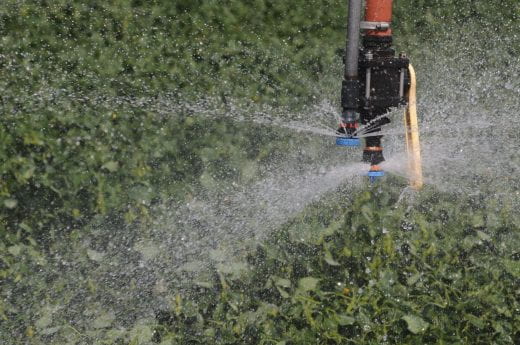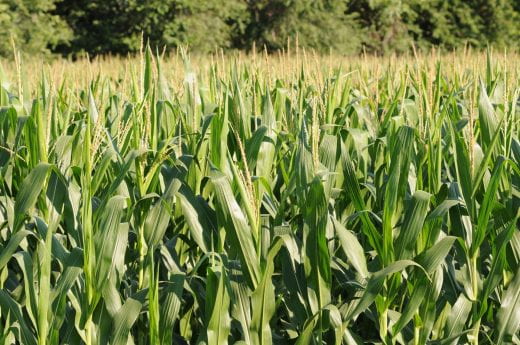Welcome to Better Kansas, where every Thursday we shed light on events, resources and other information designed to make your life, businesses, communities and state better. This is a small glimpse of what K-State Research and Extension across the state has to offer. Share on social media and subscribe! – Mary Lou Peter mlpeter@ksu.edu
Better Living, Better Communities
 IN CASE YOU CAN’T TELL BY ALL THE ADVERTISING, THANKSGIVING IS IN JUST TWO WEEKS! Whether you’re hosting a crowd or having a party of one, take a look at Food Safety for Holiday Meals for all manner of tips and information to keep the good times on track. It’s really relevant information for any time of year. Maybe it’s just me, but I especially enjoyed: “Hotline Answers ‘Panic Button’ Food Safety Questions.” I wonder what percentage of first-time turkey cooks have accidentally left the bag of giblets in the turkey while cooking it? MANY of us, I think! It’s amazing how many things are hidden in the nooks and crannies of those birds!
IN CASE YOU CAN’T TELL BY ALL THE ADVERTISING, THANKSGIVING IS IN JUST TWO WEEKS! Whether you’re hosting a crowd or having a party of one, take a look at Food Safety for Holiday Meals for all manner of tips and information to keep the good times on track. It’s really relevant information for any time of year. Maybe it’s just me, but I especially enjoyed: “Hotline Answers ‘Panic Button’ Food Safety Questions.” I wonder what percentage of first-time turkey cooks have accidentally left the bag of giblets in the turkey while cooking it? MANY of us, I think! It’s amazing how many things are hidden in the nooks and crannies of those birds!
 WHILE WE’RE ON THE TOPIC OF FOOD, we should recognize that even in a state like Kansas where we grow so much food, there are plenty of people who don’t have enough to eat. About 11% of U.S. households are food insecure, according to the USDA’s Economic Research Service. It might be those children walking by on their way to the school bus. Or the elderly man in front of you at the store. Listen in to a Sound Living podcast on improving food security.
WHILE WE’RE ON THE TOPIC OF FOOD, we should recognize that even in a state like Kansas where we grow so much food, there are plenty of people who don’t have enough to eat. About 11% of U.S. households are food insecure, according to the USDA’s Economic Research Service. It might be those children walking by on their way to the school bus. Or the elderly man in front of you at the store. Listen in to a Sound Living podcast on improving food security.
 THE YOUNGEST BABY BOOMERS ARE ABOUT 55 YEARS OLD; THE OLDEST IN THEIR 70s. That means a whole lot of people are retiring every day in this country. I know a few of those folks. Some say that after a few months, they didn’t know what to do with themselves, so they went back to work. Others say their blood pressure dropped and health improved. If you’re considering taking this big step, it sounds like a good idea to have a plan. A good conversation starter (even if that conversation is with yourself) is the factsheet So Now What? Tips for Managing Life after Retirement. It goes through typical stages, starting with the “honeymoon” stage. You know … that’s where you catch up on sleep!
THE YOUNGEST BABY BOOMERS ARE ABOUT 55 YEARS OLD; THE OLDEST IN THEIR 70s. That means a whole lot of people are retiring every day in this country. I know a few of those folks. Some say that after a few months, they didn’t know what to do with themselves, so they went back to work. Others say their blood pressure dropped and health improved. If you’re considering taking this big step, it sounds like a good idea to have a plan. A good conversation starter (even if that conversation is with yourself) is the factsheet So Now What? Tips for Managing Life after Retirement. It goes through typical stages, starting with the “honeymoon” stage. You know … that’s where you catch up on sleep!
Better Farming, Ranching and Gardening
 IF LIKE ME, YOU HAD GORGEOUS ROSES THAT PUT ON A SHOW ALL SEASON LONG, consider protecting them from the winter cold by mounding soil or compost around them. Check out more information, plus a link to a video on winterizing roses. Other topics include the lowdown on an annual turfgrass conference, getting amaryllis to bloom for the holiday season, watering your landscape NOW (may have to get that hose out one more time), the nitty gritty on what you can do to improve garden soil now and more.
IF LIKE ME, YOU HAD GORGEOUS ROSES THAT PUT ON A SHOW ALL SEASON LONG, consider protecting them from the winter cold by mounding soil or compost around them. Check out more information, plus a link to a video on winterizing roses. Other topics include the lowdown on an annual turfgrass conference, getting amaryllis to bloom for the holiday season, watering your landscape NOW (may have to get that hose out one more time), the nitty gritty on what you can do to improve garden soil now and more.
 ALMOST ALL LIVING THINGS NEED IT – WATER, THAT IS. A recent Dig Deep podcast delves into basic facts about water in Kansas – where it comes from, where it goes, and conservation. The segment features Dan Devlin, a K-State professor who’s also the director of the Kansas Center for Agricultural Resources and the Environment (KCARE). He sheds light on a new effort called the Irrigation Innovation Consortium that brings researchers from several universities together with private industry to come up with better ways to use this precious resource more efficiently. Listen in.
ALMOST ALL LIVING THINGS NEED IT – WATER, THAT IS. A recent Dig Deep podcast delves into basic facts about water in Kansas – where it comes from, where it goes, and conservation. The segment features Dan Devlin, a K-State professor who’s also the director of the Kansas Center for Agricultural Resources and the Environment (KCARE). He sheds light on a new effort called the Irrigation Innovation Consortium that brings researchers from several universities together with private industry to come up with better ways to use this precious resource more efficiently. Listen in.
 THE USDA REVISED ITS LATEST ESTIMATE ON HOW MUCH CORN U.S. GROWERS WILL PRODUCE THIS YEAR downward to 13.661 billion bushels – 118 million bushels less than what it predicted a month ago, largely owing to harvest delays. And that’s just a small portion of what’s in the U.S. Crop Production and World Agricultural Supply and Demand Estimates released Nov. 8. For a closer look at the numbers and what they mean, take a look at an analysis of the data. Ending stocks, stocks-to-use, supply-and-demand balances … it’s all in there. And it’s not just about corn. The nitty gritty on soybeans, wheat and grain sorghum is also put into perspective.
THE USDA REVISED ITS LATEST ESTIMATE ON HOW MUCH CORN U.S. GROWERS WILL PRODUCE THIS YEAR downward to 13.661 billion bushels – 118 million bushels less than what it predicted a month ago, largely owing to harvest delays. And that’s just a small portion of what’s in the U.S. Crop Production and World Agricultural Supply and Demand Estimates released Nov. 8. For a closer look at the numbers and what they mean, take a look at an analysis of the data. Ending stocks, stocks-to-use, supply-and-demand balances … it’s all in there. And it’s not just about corn. The nitty gritty on soybeans, wheat and grain sorghum is also put into perspective.
_
For more resources and activities, contact the K-State Research and Extension office in your area. Check out our other blogs and subscribe to our weekly emails here: https://www.ksre.k-state.edu/news/blogs/
